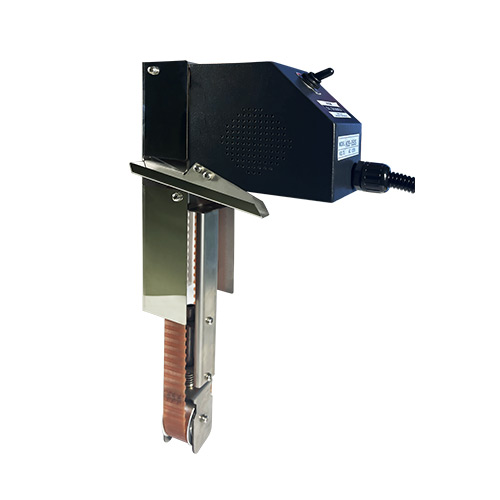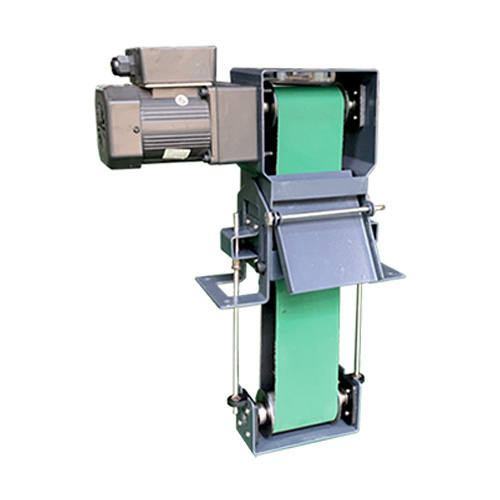-
WhatsAPP: +86 18706448138
-
Tengzhou, Shandong, China

Why a DRO Lathe Boosts Precision and Productivity
In this comprehensive guide, we’ll explore how DRO lathes enhance precision and productivity, with insights into their functionality, advantages.
Table of Contents
Introduction

In the ever-evolving world of machining, precision and productivity are the cornerstones of success. A DRO lathe, or a lathe equipped with a Digital Readout (DRO) system, has become a game-changer for machinists seeking to elevate their craft. This advanced technology provides real-time feedback on tool positioning, enabling operators to achieve unparalleled accuracy and efficiency. Whether you’re a seasoned professional or a hobbyist, understanding the benefits of a DRO lathe can transform your machining operations. In this comprehensive guide, we’ll explore how DRO lathes enhance precision and productivity, with insights into their functionality, advantages, and practical applications. Shansen, a leading developer and manufacturer of CNC machine electrical components since 2001, has been at the forefront of integrating DRO systems into lathes, delivering innovative solutions to machinists worldwide.
What Is a DRO Lathe and How Does It Work?
A DRO lathe is a lathe machine equipped with a digital readout system that displays the precise position of the cutting tool relative to the workpiece. Unlike traditional lathes that rely on manual measurements or vernier scales, a DRO lathe uses linear scales and encoders to provide real-time data. These components are mounted on the lathe’s axes (typically X and Z) and work in tandem with a digital display unit to show measurements with high accuracy, often down to 5 microns or less.
The DRO system consists of several key components:
- Linear Scales: Precision-ground scales with etched grating marks that serve as a reference for measurement.
- Encoders: Devices that read the scale’s markings and translate movement into digital signals.
- Digital Display Unit: A screen that shows real-time coordinates, allowing operators to monitor tool position instantly.
- Software: Advanced DRO systems may include software for features like tool offset compensation and preset dimensions.
By eliminating the need for manual calculations and reducing human error, a DRO lathe ensures consistent results, making it an essential tool for modern machining.
The Role of DRO in Enhancing Lathe Precision
Precision is critical in industries like aerospace, automotive, and medical device manufacturing, where even a micron-level deviation can compromise quality. A CNC lathe enhances precision by providing real-time feedback, allowing operators to make immediate adjustments. Unlike traditional methods that rely on counting handwheel revolutions or reading analog dials, the DRO system displays exact measurements, reducing the risk of misinterpretation. For example, a machinist turning a shaft to a specific diameter can input the desired dimension into the DRO and monitor progress, ensuring the final product meets exact specifications.
Key Benefits of Using a DRO Lathe

The adoption of DRO lathes has surged due to their ability to streamline machining processes. Here are some of the primary benefits that make DRO lathes indispensable:
- Improved Accuracy: DRO systems provide measurements with resolutions as fine as 0.005mm, ensuring parts meet tight tolerances.
- Increased Productivity: By reducing setup time and eliminating manual measurement errors, CNC lathes allow machinists to complete tasks faster.
- Ease of Use: The intuitive digital display simplifies operation, making it accessible to both novice and experienced machinists.
- Versatility: DRO systems can be retrofitted onto existing manual lathes or integrated into CNC lathes, offering flexibility for various setups.
- Reduced Waste: Precise measurements minimize material waste and rework, saving costs and resources.
Shansen has been instrumental in advancing DRO technology, offering robust systems designed to withstand harsh workshop environments while delivering consistent performance.
How DRO Lathes Save Time in Machining
Time is money in machining, and DRO lathes excel at optimizing workflows. Traditional lathes require machinists to stop frequently to measure workpieces with calipers or micrometers, a process that is both time-consuming and prone to error. With a CNC lathe, operators can monitor tool position in real time, eliminating the need for constant manual checks. This continuous feedback allows for faster adjustments and smoother operations, significantly reducing cycle times. For instance, tasks like drilling, turning, or threading become more efficient as the DRO guides the operator to the exact coordinates without guesswork.
DRO Lathe Features That Boost Productivity
Modern DRO lathes come equipped with advanced features that further enhance productivity. These include:
- Preset Functions: Operators can input target dimensions, allowing the DRO to guide them to the exact position.
- Tool Offset Compensation: Accounts for tool wear or geometry, ensuring consistent accuracy over long production runs.
- Coordinate Conversion: Switches between absolute (ABS) and incremental (INC) modes for flexible operation.
- Error Compensation: Corrects for mechanical inaccuracies like lead screw backlash, common in older lathes.
- Specialized Functions: Some DRO systems offer features like circular arc machining or oblique line drilling, simplifying complex tasks.
Shansen’s DRO systems, developed with over two decades of expertise, incorporate these features to maximize efficiency. Since its founding in 2001, Shansen has focused on creating user-friendly, high-performance electrical components that empower machinists to achieve more in less time.
Retrofitting a CNC Lathe: Upgrading Existing Machines
One of the most significant advantages of DRO technology is its adaptability. A DRO system can be retrofitted onto older manual lathes, breathing new life into aging equipment. This process involves installing linear scales, encoders, and a digital display unit, often with custom mounting kits to ensure compatibility. Retrofitting is a cost-effective way to enhance precision and productivity without investing in a new machine. Shansen offers tailored DRO solutions that simplify the retrofitting process, with plug-and-play kits designed for a wide range of lathe models.
Comparing DRO Lathe Capabilities
To illustrate the impact of DRO lathes, the following table highlights key performance metrics when using a DRO system versus a traditional lathe. This comparison focuses on operational aspects rather than brand-specific differences, providing a clear view of the technology’s benefits.
| Feature | DRO Lathe | Traditional Lathe |
|---|---|---|
| Measurement Method | Digital display with real-time feedback | Manual measurement with calipers or dials |
| Accuracy | ±0.005mm or better | ±0.02mm or higher, depending on operator skill |
| Setup Time | Reduced due to preset functions | Longer due to manual measurements |
| Productivity Gain | 20-40% increase in output | Baseline |
| Error Rate | Low, minimized by digital precision | Higher, due to human error |
| Retrofitting Option | Compatible with most manual lathes | Not applicable |
| Operator Skill Level | Suitable for all skill levels | Requires experienced operators for precision |
This table underscores the transformative impact of DRO lathes, particularly in terms of accuracy and efficiency, making them a valuable investment for any workshop.
Practical Applications of DRO Lathes in Industry
DRO lathes are widely used across various industries due to their versatility and precision. In aerospace, they ensure components like turbine blades meet stringent tolerances. In automotive manufacturing, DRO lathes produce engine parts with consistent quality, reducing defects. Medical device production benefits from CNC lathes when creating intricate components like surgical tools or implants. Even small workshops and educational institutions rely on CNC lathes for prototyping and training, as their ease of use lowers the learning curve for new machinists. Shansen’s DRO systems have been adopted in these sectors, reflecting the company’s commitment to delivering reliable, high-quality solutions since 2001.
Choosing the Right DRO Lathe System for Your Needs
Selecting a DRO system requires careful consideration of your machining requirements. Key factors include:
- Resolution and Accuracy: For high-precision tasks, choose a system with a resolution of 0.5μm to 5μm.
- Environmental Durability: In harsh workshop conditions, opt for scales with high IP ratings (e.g., IP67) to resist dust and coolant.
- Compatibility: Ensure the DRO system is compatible with your lathe’s make and model.
- Ease of Installation: Look for systems with pre-configured mounting kits to simplify setup.
- Additional Features: Consider advanced functions like tool offset or coordinate conversion for complex projects.
Shansen’s expertise in CNC machine components ensures that its DRO systems are designed with these factors in mind, offering customizable solutions for diverse applications.
Tips for Maximizing DRO Lathe Performance

To get the most out of a DRO lathe, consider the following best practices:
- Regular Calibration: Periodically calibrate the DRO system to maintain accuracy.
- Proper Installation: Ensure scales and encoders are securely mounted to prevent vibrations from affecting readings.
- Operator Training: Train staff on DRO features to fully leverage preset functions and error compensation.
- Maintenance: Keep linear scales clean and free from debris to ensure reliable performance.
- Software Updates: If your DRO system includes software, check for updates to access new features or improvements.
By following these tips, machinists can ensure their DRO lathe operates at peak performance, delivering consistent results over time.
Conclusion
A DRO lathe is more than just a tool—it’s a catalyst for precision and productivity in machining. By providing real-time feedback, reducing errors, and streamlining workflows, DRO lathes empower machinists to achieve superior results with less effort. From small workshops to large-scale manufacturing, the benefits of DRO technology are undeniable. Shansen, with its legacy of innovation since 2001, offers cutting-edge DRO systems that enhance lathe performance across industries. Ready to elevate your machining capabilities? Contact us at Shansen to explore our DRO solutions and transform your workshop today.
FAQ
What is a DRO lathe?
A DRO lathe is a lathe equipped with a digital readout system that displays real-time tool position, enhancing precision and productivity.
Can a DRO system be added to an existing lathe?
Yes, DRO systems can be retrofitted onto most manual lathes, offering a cost-effective way to upgrade older machines.
How does a DRO lathe improve accuracy?
By providing digital measurements with high resolution, a DRO lathe eliminates manual errors and ensures precise cuts.


